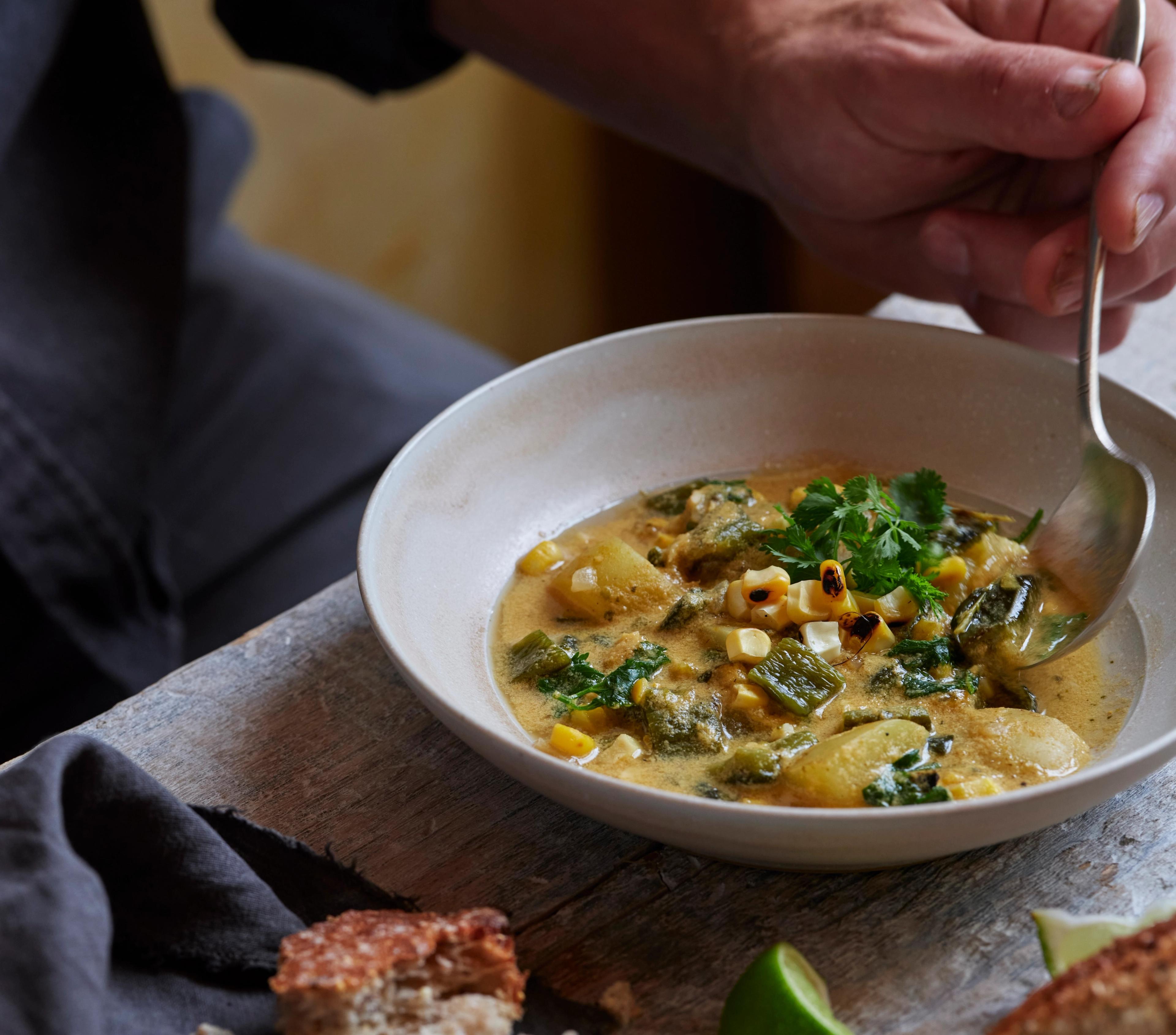Comforting, One-Pot Meals You’ll Cook Again and Again
Dan Buettner’s latest cookbook makes weeknight cooking effortless with 100+ plant-forward, one-pot recipes.
Published On

Photo by David McLain
For more than two decades, Dan Buettner has been chasing the answer to a deceptively simple question: Why do some people live longer—and better—than the rest of us? His work mapping the “Blue Zones”—places like Okinawa, Japan, and Sardinia, Italy, where people regularly reach 100—has turned into bestselling books, a Netflix docuseries, and a cultural shorthand for eating (and living) well.
Now, Buettner is back with Blue Zones Kitchen: One Pot Meals, a follow-up to his blockbuster Blue Zones Kitchen. This time, he’s packaging his research into 100+ fast, plant-forward recipes that don’t just channel the longevity traditions of Nicoya, Ikaria, and beyond—they also fit into real life. Think comforting soups, weeknight-friendly dinners, and simmer-all-day stews that ask more of your stove than they do of you.
“It’s not about hacking your health,” Buettner told us. “It’s about cooking simple food at home, over and over again, until that becomes the thing you crave.”
Food52 caught up with Buettner to talk about his latest book, why beans are still the hero ingredient, and how one-pot cooking is less of a trend than a blueprint for living well. Plus, he shared two recipes that prove longevity cooking can be both comforting and delicious.

Photo by Courtesy of Dan Buettner, with Photography by David McLain.
Who Is Dan Buettner?
A three-time Emmy Award winner, explorer, and bestselling author, Buettner has spent decades studying how culture, environment, and food shape the lives of the world’s longest-lived people. His Netflix docuseries, Live to 100: Secrets of the Blue Zones, debuted in 2023.
What Is the Blue Zones Diet?
The throughline across five longevity hotspots (Okinawa, Sardinia, Ikaria, Nicoya, and Loma Linda) is simple: prioritize plants, whole foods, beans, and meals rooted in community. It follows 11 main guidelines like “retreat from meat, reduce dairy, and slash sugar." And on the flip-side, it champions high-fiber, whole grains, and raw vegetables.
Q&A With Dan Buettner
Answers have been edited and condensed for clarity.
You’ve been immersed in Blue Zones research for decades. What keeps you curious?
Every time I go back to a blue zone, I’m reminded that longevity isn’t about discipline or willpower—it’s about culture and environment. People live long not because they’re trying to hack their health, but because the healthiest choices are the easiest ones in their daily lives. That lesson continues to inspire me, and I think it’s something we can all learn from and bring home.
What surprised you while working on this new cookbook?
Just how powerful cooking at home really is for your health. In blue zones, almost every meal is prepared at home, and that alone makes a huge difference. When you cook, you control the ingredients, the portions, and the quality—and you avoid the extra sugar, salt, and unhealthy fats that are built into restaurant and processed foods.
Your last book laid a foundation. What’s different this time?
Blue Zones Kitchen: One Pot Meals is designed for real life. The average American eats out over 100 times a year, adding hundreds of unnecessary calories each time. This book makes the case for a simple solution: cooking at home. To make it doable, I teamed up with a Stanford lab to analyze over 650,000 popular recipes and isolate the flavor profiles people love most. The result is 100 fast, affordable, plant-based one-pot meals that aren’t just rooted in longevity traditions but are also designed to taste so good you’ll want to cook them again and again.
For readers who feel overwhelmed, what’s the best entry point?
Start by finding five or six plant-based meals you really enjoy and put them into regular rotation. That’s it. If you love a minestrone, a bean chili, or a stir-fry—make those your go-to dinners. Once you have a core repertoire of dishes you look forward to, the shift feels easy. That’s exactly what this book is designed to help with.
You’ve often tied food to happiness as much as health. How do these recipes reflect that?
In blue zones, food is about more than nutrition; it’s about connection, ritual, and joy. A pot of soup or stew isn’t just dinner; it’s something you put in the middle of the table and share with the people you love. These one-pot meals carry that same spirit. They’re simple, comforting, and made to be shared, which is where the real happiness lies.
Recipes From “Blue Zones Kitchen: One Pot Meals”
To give us a taste of what this type of cooking looks like in real life, Buettner shared two recipes from the new book. Both are weeknight-friendly, plant-forward, and proof that simple one-pot meals can still deliver great flavor.
A 30-minute falafel that can double as a burger with a bit more shaping. This recipe is an easy way to fit more beans into your daily diet.
Featured Video
Comforting but not heavy, this chowder layers poblanos, jalapeño, cumin, and more spices for just the right amount of heat.
If Buettner’s research has shown anything, it’s that longevity isn’t built on hacks or shortcuts. It comes from the kinds of meals you cook over and over again, the ones that are as nourishing as they are comforting. A pot of beans, a simple soup, a tray of falafel—these are the dishes that connect us to tradition, to each other, and maybe even to a longer, happier life.